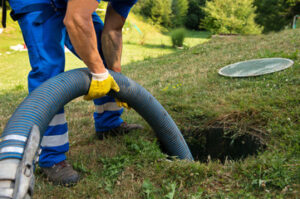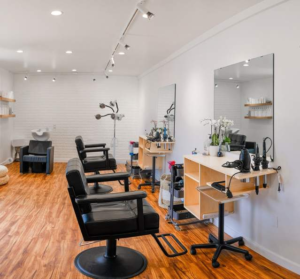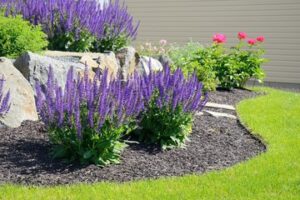SEO is a crucial component of any integrated marketing strategy. It helps search engines like Google index web pages and articles most relevant to a query.
It is important to track your SEO progress and make necessary adjustments. This will help you optimize your content and ensure that it meets the needs of your audience. Contact Crescent City Marketing now!

Keywords are the building blocks of SEO content. They tell search engines what topics your content covers and help them find it when users are searching for those topics. Without keywords, search engines would have a hard time determining the relevance of your content and ranking it in the SERP.
The goal of keyword research is to find keywords that have a high search volume and are relevant to your target audience. Once you’ve found those keywords, you can use them to create compelling content and optimize your site for the search engine results page (SERP). By using keywords strategically, you can improve your website’s visibility and organic traffic.
When selecting keywords, it’s important to consider both their search volume and competition. The best keywords are ones with a high search volume but low level of difficulty, as this will help you get more organic traffic. Additionally, it’s important to think about the intent of your audience when choosing keywords. If you choose keywords that don’t match their intent, your content will not appear in the results they’re looking for, and you will be missing out on potential customers.
There are four different types of keywords: branded, branded misspellings, campaign names or taglines, and unbranded terms. Branded terms include the name of your business in the query, while branded misspellings and campaigns refer to specific brands or products. Unbranded terms, on the other hand, describe the problem or solution that you are offering.
The most popular keyword is “””, which has a high search volume and a low level of difficulty. The most competitive keywords are those that have been ranked highly in the past and are being targeted by many marketers. These keywords have a higher chance of generating clicks, but they are more likely to result in high bounce rates.
To determine the most effective keywords for your business, you can use free tools like Google’s Keyword Planner or paid tools such as Ahrefs, Semrush, Wordtracker, and Ubersuggest. Once you’ve identified the most popular keywords, make sure they’re woven into your content to attract organic search traffic.
Content
The content of your website is the most important element in SEO. It tells search engines what your website is about, and it also helps them understand the context of your keywords. High-quality content is essential to improve your visibility and rank higher in search engine results pages (SERPs). It also helps you engage and connect with your audience, which can lead to increased sales and brand awareness.
There is a common misconception that SEO content is just long, keyword-stuffed blog posts. However, the truth is that there are many different types of SEO content. For example, you can create helpful articles and FAQs to help your audience find what they’re looking for. You can also use a glossary to help your audience learn new terms and concepts in your industry. Another option is to create a directory of relevant websites, such as an online fashion guide or a travel destination map.
In addition to written content, you can also use video and images to increase the value of your SEO content. SEO content should be relevant and valuable to your target audience, and it should include your keywords. It should also be well-structured and easy to read. Finally, you should promote your SEO content to get it in front of the right audience. This can be done by using social media, email marketing, and influencer outreach.
The most effective way to optimize your content is to start with keyword research. This process will help you identify the keywords that are most likely to be searched by your audience. It will also help you understand how your competitors are ranking for these keywords and what type of content they’re creating. With this information, you can create your own content to rank higher in search engine results pages.
Creating quality SEO content is a critical part of any digital marketing strategy. It helps drive organic traffic to your website, increase your brand awareness, and encourages people to buy your products or services. However, with so much competition, it can be difficult to stand out in a sea of similar sites. Fortunately, by following these tips, you can create high-quality SEO content that will boost your visibility and increase your revenue.
Link building
A link building strategy is a crucial component of SEO. It involves constructing a network of external links that demonstrate your relevance in a specific niche to search engines. It encompasses both on-page and off-page SEO, as well as a variety of tactics that range from digital PR to content marketing.
The best way to earn backlinks is by creating remarkable content that users can’t help but share with their followers and connections. This includes blog posts, white papers, infographics, and podcasts. Creating great content is a long-term investment, but it’s one of the most effective ways to build authority in your niche and attract high-quality links.
However, not every piece of content you create is going to be a one-of-a-kind masterpiece worthy of thousands of links. That’s why SEO professionals have developed a variety of strategies to persuade other websites to link to your pages.
One of the most effective methods for acquiring backlinks is to find existing unlinked mentions. These are references to your website across the internet that don’t contain a link, but do appear in search results. By identifying these references, you can reach out to the websites and influencers that mentioned your site to ask for a link.
Another effective technique is to partner with businesses, organizations, and influencers in your industry. This is a low-cost way to acquire links and promote your brand. For example, a collaboration with a major brand like Levi’s or McLaren can result in a significant number of links.
It’s also important to note that the sites that host your backlinks should be relevant to your industry and have a similar audience as your own. This is why it’s so important to conduct competitor analysis and research before reaching out to potential link sources.
Lastly, it’s a good idea to use tools like Semrush’s Link Building Tool to discover high-quality prospects. This tool searches for websites that have a link to your competitors and shows you a list of potential link-building opportunities. By analyzing the competitors’ links, you can identify which ones are worth pursuing and close any gaps in your backlink profile.
Technical SEO
Technical SEO focuses on the structure of a website and server configurations that make it possible for search engines to crawl and index the content. This includes optimizing website architecture, implementing XML sitemaps, and ensuring that the right pages are indexed and found in searches. It also involves minimizing server response times, compressing images, and using caching. In addition, it includes ensuring that mobile users have a great experience and that the website is secure (HTTPS).
A robust technical SEO strategy is essential for a successful search engine optimization campaign. It ensures that all the other SEO efforts your business puts into a website will be effective. Without a solid technical foundation, your website will struggle to rank high in search results. Technical SEO is not a substitute for content marketing, but it complements and reinforces it by making your content easily discoverable.
The most important aspect of technical SEO is ensuring that the website can be crawled and indexed by search engines. This is accomplished by submitting an XML sitemap and avoiding duplicate content. It is also important to set a “preferred domain” that identifies the root domain of your website and specifies the address that should appear in search results. This helps prevent search engines from interpreting the different versions of your domain as distinct websites and can improve performance by reducing crawl budgets.
Other important aspects of technical SEO include optimizing a website’s crawl budget and ensuring that web pages are accessible to search engines. This includes removing unnecessary redirects, limiting the number of low-quality or duplicate pages, and improving website speed. Additionally, it is important to optimize meta tags and descriptions and to keep them within the recommended character limits.
While some people argue that technical SEO is more important than on-page SEO, both are equally important and should be addressed simultaneously. A website that is not properly optimized for technical SEO will not rank well in search engine results, no matter how compelling the content is. It is like a house with a strong foundation but a lousy layout.



